LIVERWORTS
Habitat:
Liverworts are usually found in moist habitats such as river banks, marshes, wet tree barks, damp soil etc.
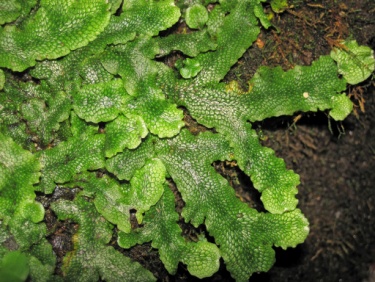
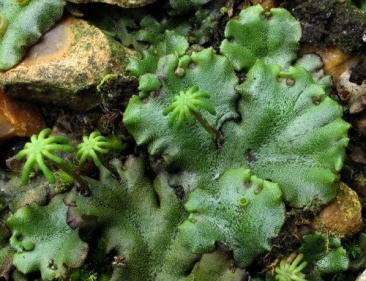
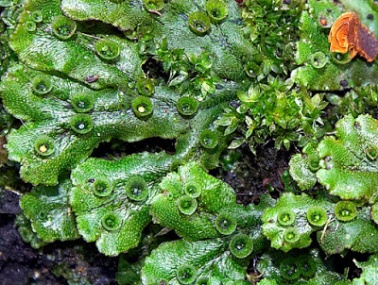
Morphology:
Liverworts have a thalloid structure. The thallus is flat and dorso-ventral. The upper side consists of leaf like structures and the lower side bears numerous rhizoids.
Reproduction:
Asexual reproduction:
- Takes place by fragmentation of the thallus, or by the formation of specialized structures called gemmae.
- Gemmae are asexual buds are borne on small receptacles called gemma cups found on the thalli.
- These buds detach from the parent and germinate into new individuals.
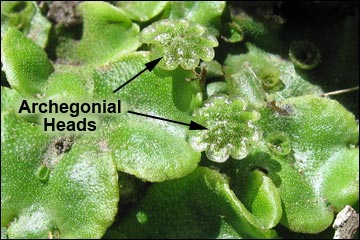
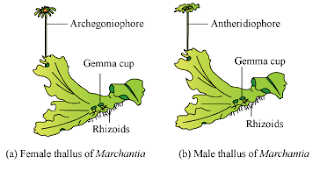
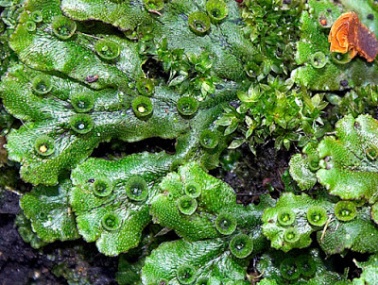
Sexual reproduction:
- Gametophyte is the dominant generation.
- Thallus bears male and female sex organs – antheridium and archegonium.
- It produces the gametes which fuse to form a zygote.
- Zygote develops into a sporophyte.
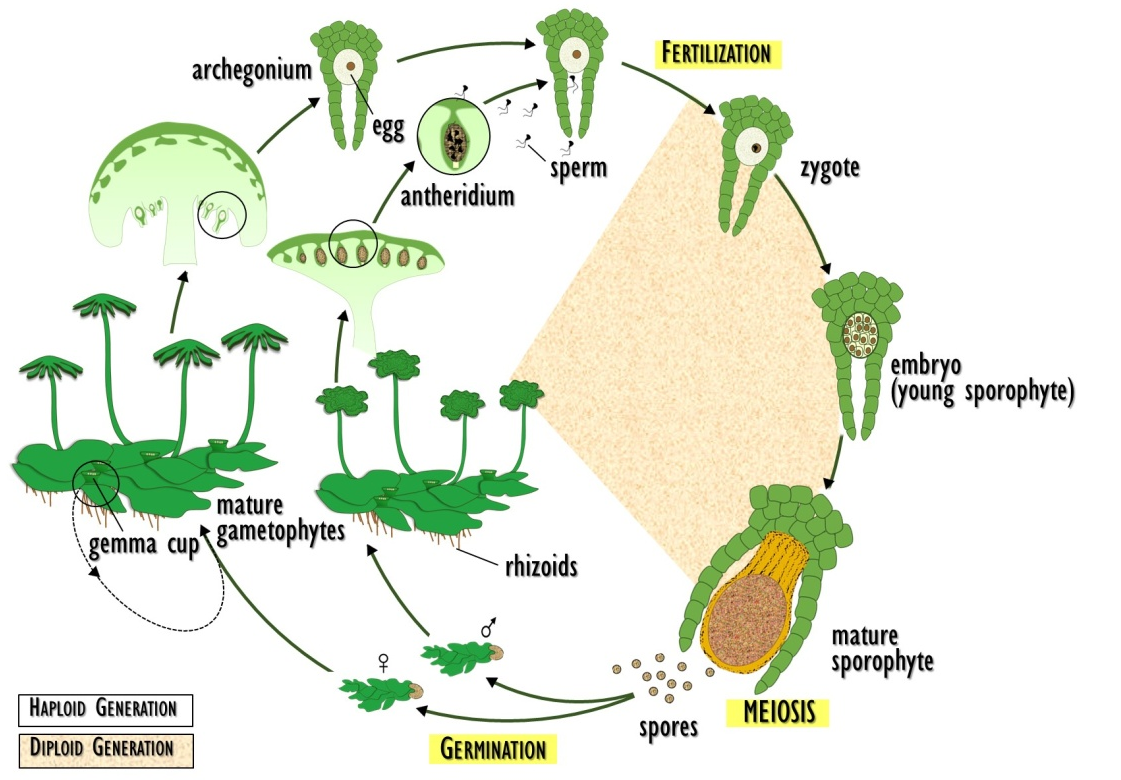
- Sporophyte is short lived.
- It is differentiated into a foot, setae and capsule.
- Capsule bears spores which germinate into gametophyte.
MOSSES
Habitat
Mosses are found in wet and damp habitats. They are widely present in urban environments such as walls, driveways, and other man – made structures.
e.g.- Funaria, Polytrichum, Sphagnum.
Morphology:
Mosses have two phases in the life cycle. The gametophyte plant has leaf like and stem like structures. The gametophyte consists of a raised stalk called seta, which terminates in a sporangium.
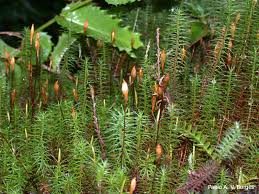
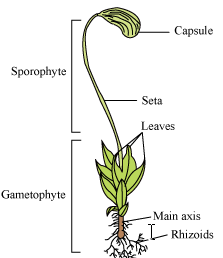
Reproduction:
Gametophyte: The gametophyte is the predominant generation. It consists of two phases – Protonema stage and the Leafy stage.
Protonema: The spore first germinates to the protonema stage. It is highly filamentous and branched. It is a green creeping form. Vegetative reproduction (by fragmentation or budding) takes place during this stage.
Leafy stage: It is the second stage. It develops from a lateral bud which arises on the protonema. The body is composed of a slender axis bearing spirally arranged leaves and numerous rhizoids. This stage bears the sex organs (antheridia and archegonia) at the apex of the leafy shoots. It produces the gametes.
Sporophyte: Gametes fuse to form the zygote which develops into a sporophyte. It is composed of a foot, setae and a capsule. The capsule contains spores, which germinates into the gametophyte.